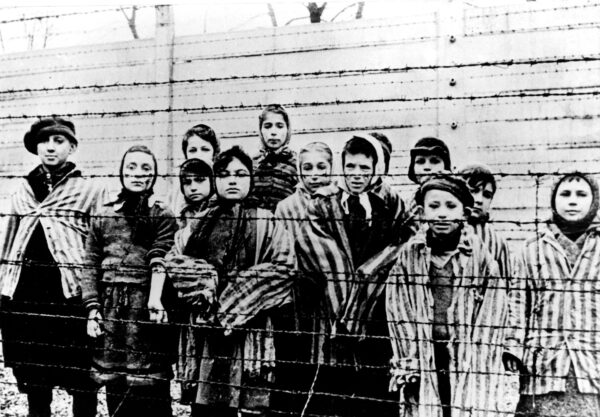In January, we learned about World War 2. As with every war, I ask students to take notes on:
- What were the causes of the war?
- Why did the US get involved in the war?
- How was the war fought and won? Who won and lost?
- What were the consequences of the war?
The biggest surprise? That the Treaty of Versailles that ended World War 1 helped cause World War 2!
I spent one day focusing on the Holocaust. I started by telling my students I would not be sharing all the details with them. “I’ve been to the National Holocaust Museum in Washington, DC. They wall off some exhibits so adults can see them and children can’t. You don’t need to know everything about how bad people can be.”
I talked about how racism was common all over the world at that point in history. It was open and socially acceptable. It wasn’t just Germans who were racists. It was Japanese and Americans and most everyone else too.
Then I told them, “The Nazis murdered approximately six million European Jews and at least five million other people, including prisoners of war, gypsies, Jehovah’s Witnesses, and homosexuals.”
The room went still.
I shared about:
- how the Nazis dehumanized the Jews
- the Nuremburg Laws
- Kristallnacht (Night of Broken Glass)
- the ghettoes in Poland
- the final solution
- the death camps

I shared how I had met one of the men who liberated a camp at the end of the war—Senator Mark Hatfield. He told about soldiers and officers crying as they witnessed what had been done.
I said there are people now who say the Holocaust never happened, or it wasn’t so bad, or the Jews make a big deal about something that was nothing really. “If anyone ever says that to you, you can say, I had Mrs. Kragen as a teacher, and she met an eyewitness who told her just how bad it really was.”
Once I was done, we pulled into a circle so students could share reactions. A student Kevin commented that Hitler must have been the most evil man who ever lived. I said that Stalin did much the same things in the Soviet Union as Hitler did. So did Pol Pot in Cambodia. Kevin amended his assessment to “one of the most evil men who ever lived.” We all could agree with that.
Sylvie said it wasn’t fair to treat people that way.
We all could agree with that.
When my students were done working through their feelings, I said, “Are you ready for the good news?”
Absolutely, yes.
First of all, “There were people who helped. The Jews call them Righteous Gentiles.” Denmark was an extraordinary example.
In addition, after people saw what the Nazis had done, they said, this can never happen again. Suddenly, around the world, people began to see that racism was a bad idea. That it could have horrible consequences. “We began to teach our children that racism was bad.”
Finally, the UN decided that one of the reasons the Jews were so vulnerable was that they didn’t have a homeland—a country of they own. They hadn’t had one since the days of the Roman empire. So the UN decided to give the Jews their own country, in the land they used to own.
“It was ironic,” I added, “but Hitler and the Holocaust are why Israel exists.”
I teach history so students learn about the big events of the past. Equally important, I want them to understand causes for the events and effects of the events.
For many of my students, social studies is their favorite part of the day. Why not? It’s helping them make sense of their world!
The lesson after WW2 was on Blacks who served in the war returning to Jim Crow laws. My students keep being shocked and dismayed at how racist people were, heartened by how far we have come, and yet mindful that we have not yet arrived. Personally, I think that seeing the depths of the evils of the past (well, softened slightly since they are still children) helps make them more alert to the dangers of racism still in the world today.
I love your student, Aleesha’s reflection and response to the Great Depression and the pandemic. That perspective is so powerful. Additionally, I wonder how she might respond if you drew comparisons between Hitler’s Nazi regime and the eugenics “science” and Jim Crow laws in the United States. https://www.history.com/news/how-the-nazis-were-inspired-by-jim-crow
So often, when we learn of the Holocaust, we see it as an isolated frame of mind, but we have seeds of similar ideas here too. Great job helping them make sense of the world in social studies!